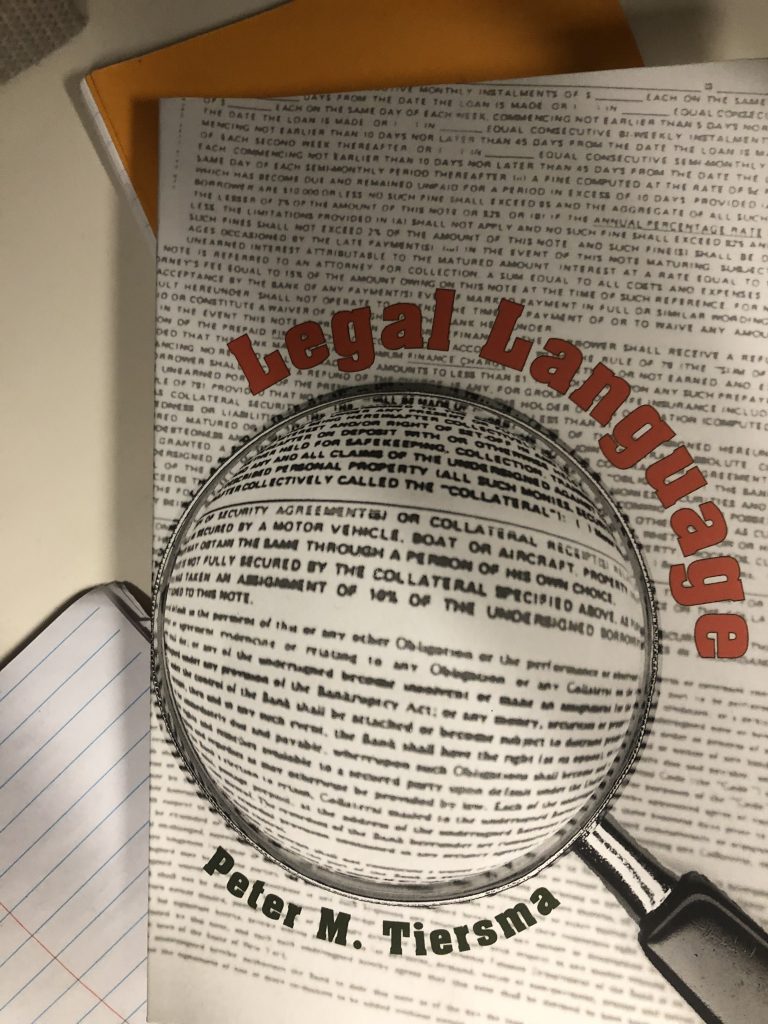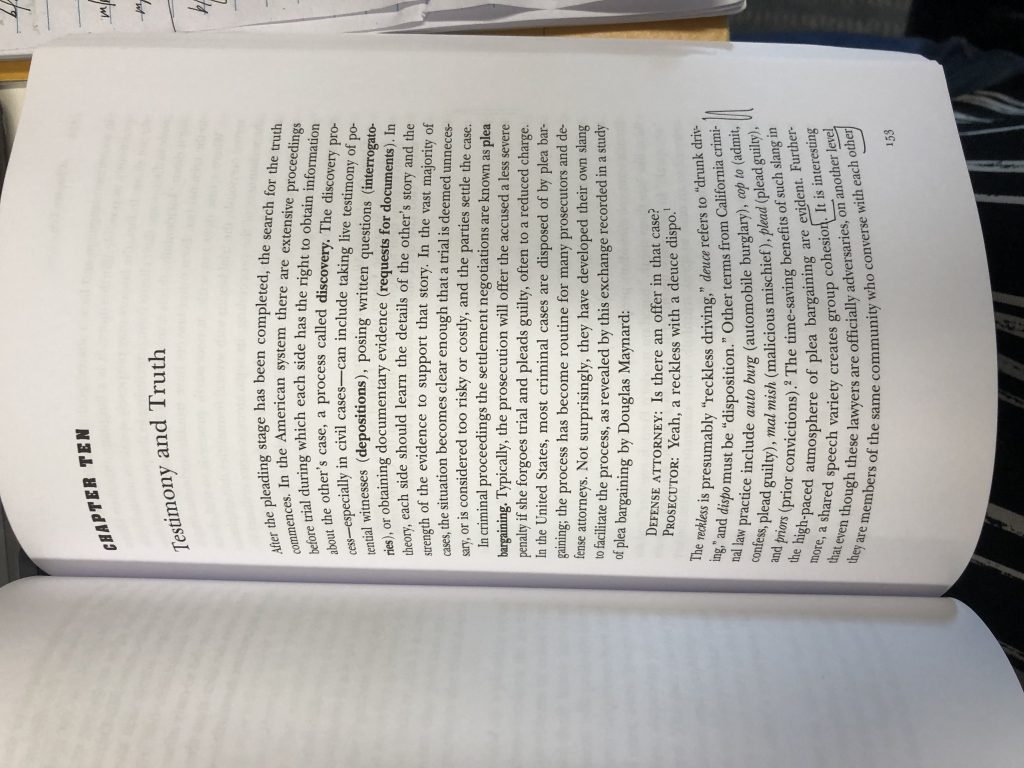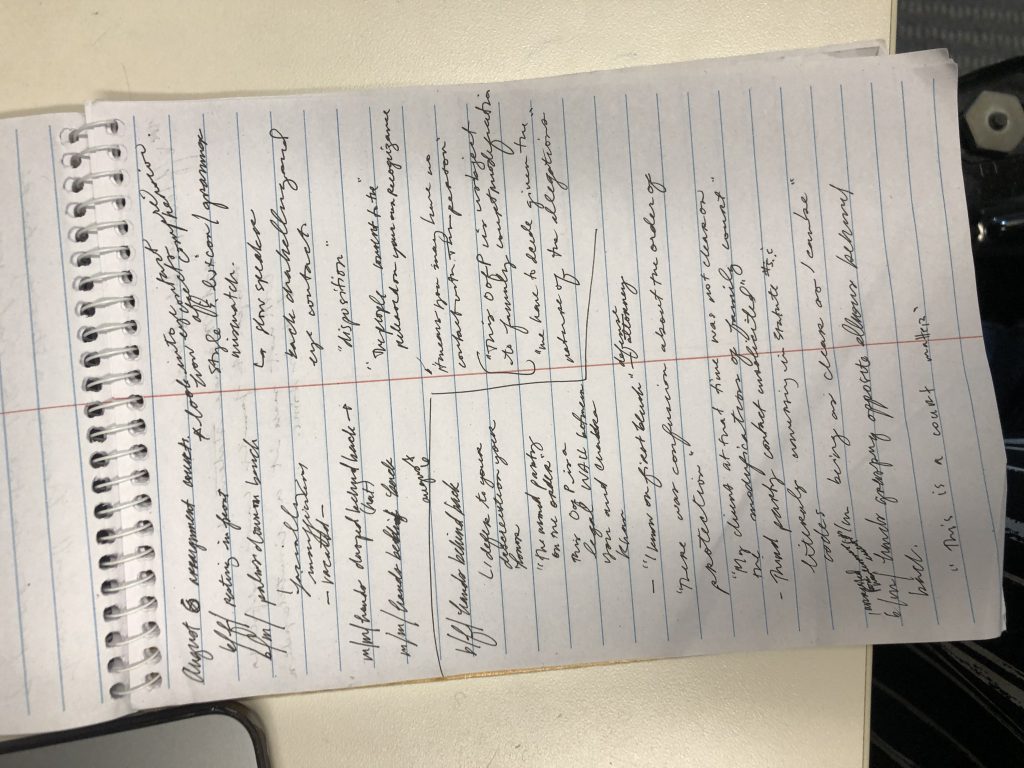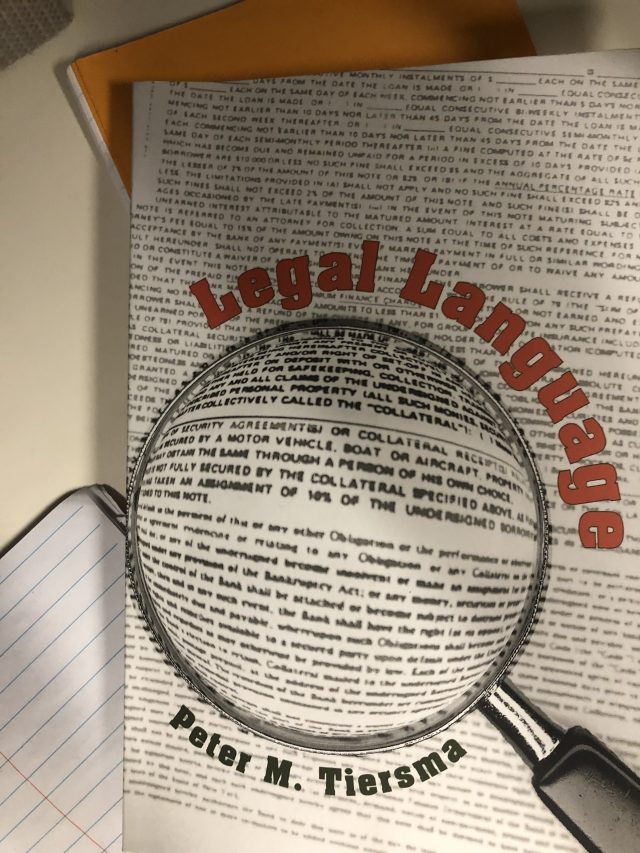
My latest reading has been from Peter Tiersma’s Legal Language 
The line “It is interesting that even though these lawyers are officially adversaries, on a nother level they are members of the same community who converse with each other in a common language and have a common goal: processins cases as expeditiously as possible.” 
Notes from readings and from courts in my truly terrible handwriting.
Though the summer is coming to an end, I cannot help but feel that my research is still only beginning. Even after hours of sitting in Courtroom 1 at 100 Centre St. and many nights spent paging through work on forensic linguistics, there is so much I don’t know about how language is working in arraignments. My most recent reading has been from Peter Tiersma’s Legal Language, which provides a broad overview of the development of legal jargon in the English language and how it is used today. It’s fascinating and folds in many aspects of socio-cultural-political changes that besieged England during the development of English itself, which I hadn’t made explicit connections to in my own work. But I’m still frustrated by his light touch on the topic that interests me most, how legal language can have detrimental effects on those who are processes through legal-linguistic pathways. The focus, not unintuitively, falls on the possibility for discrimination on the witness stand, and the ways that jurors (mis)understand their instructions can affect criminal cases.
I think that part of the importance of my work is that it can sometimes feel inconsequential. There isn’t a dramatic court case with emotional witnesses or blatant discrimination to uncover. Instead, I’m trying to see the potential for linguistic opacity in a field where I myself now feel comfortable. That realization, that my own intuition about what is or is not comprehensible may mislead me, has forced me to consider the claims I am able to make and the ways in which I am analysing my data. The final thesis of my paper will no doubt be less bombastic that I want it to be, laying out the linguistics events as they occur and noting possible channels for further inquiry. Likely, I will be paying more attention to paralinguistic features, to body language, and speech speed, and back channelling than I originally intended, but I am enjoying exploring these pathways and finding new ways to consider my own questions as I do so.
Today, in court, the judge said to a defendant, “I’m being as clear as I can be.” Is he? What does clarity look like for him, and does it look the same for the woman he was addressing? The sentiment and the impulse caught my attention and disrupted my note-taking, as I paused to consider the implications that come from that one small sentence. This research has been an exciting undertaking, and I’m equally excited to continue developing my thoughts through this final month.
